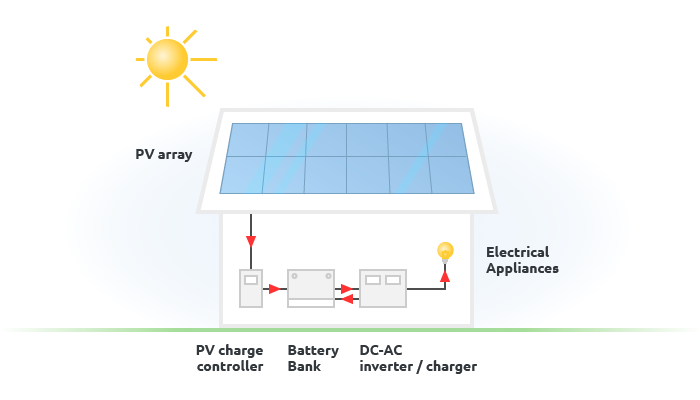Standalone or autonomous Photo-Voltaic (PV) system provides energy self-sufficiency and independency in places where there is no local electricity grid or it is too expensive to connect to the grid access. In these cases, it is more cost effective to install a single standalone PV system than paying the costs of having the local electricity company extend their power lines and cables directly to the home.
It is an automatic solar system that uses photo-voltaic technology to generate electricity and delivers the power to charge a bank of batteries during the day for use at night when the suns energy is unavailable. Batteries are the most important element of this solar power system. During the day, the PV system is generating energy which directly feds to the load and the excess electrical energy is stored to the batteries for later use. Meanwhile the solar system is idle at night or of low solar irradiance, such as rainy days, energy is supplied to the load from the batteries. The battery storage size is tied to the electrical usage or else the load and needs to be well studied before installation to avoid under or over sizing which in turn causes energy shortage or energy excess and high initial costs.
